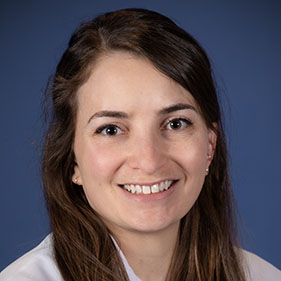In-depth research conducted by UC Davis Health shows that a significant number of autistic children also have attention-deficit/hyperactivity disorder (ADHD). These findings underscore the need to thoroughly diagnose children when they are young to ensure they have appropriate care. The study was published in European Child and Adolescent Psychiatry.
"As a clinician, I see how these symptoms impact day-to-day functioning for these youth," said Julie Schweitzer, who is a professor in the Department of Psychiatry and Behavioral Sciences and the UC Davis MIND Institute. She also directs the Attention, Impulsivity and Regulation (AIR) ADHD program and was senior author on the study. "If we're not tuned into these issues, then they're not going to be addressed, and it could affect these young people's success."
Being able to diagnose comorbidities like ADHD in autism is vital to develop appropriate and effective treatment plans. It is incredibly important for providers to be aware of the high rates of comorbidity, as early assessment and intervention are associated with improved outcomes." -Elicia Fernandez, child and adolescent psychiatrist
The importance of the right diagnosis
While clinicians have been diagnosing children with autism and ADHD for many years, this dual diagnosis was only officially recognized in 2013, when the fifth edition of the Diagnostic and Statistical Manual (DSM) was published.
Since then, researchers have ramped up their investigations into how these combined traits can influence a child's behavior and the care they need. Clinicians say accurate diagnoses are critical to both address these conditions and ensure a child's long-term well-being.
"If a youth with autism presents with irritability and challenging behaviors, a provider might prescribe an antipsychotic medication," said child and adolescent psychiatrist Elicia Fernandez. "However, antipsychotics can be associated with significant side effects, including metabolic syndrome and movement issues, which can be serious and even life threatening. If the underlying issue is actually ADHD, then an antipsychotic is not the first-line treatment."
Building on the CHARGE and ReCHARGE studies
UC Davis Health researchers are uniquely positioned to investigate the links between autism, ADHD and other neurodevelopmental conditions. MIND Institute researchers lead two long-term studies that assess how genetics, environment and other factors affect development from early childhood through adolescence: Childhood Autism Risks from Genetics and the Environment (CHARGE) and a follow-up called ReCHARGE.
Public Health Sciences Professor Irva Hertz-Picciotto, also of the MIND Institute, started CHARGE and helps direct RECHARGE.
The current study revisited participants from CHARGE. Researchers used parental interviews, rating scales, behavioral observations, and other methods to identify ADHD diagnoses and symptoms in autistic children and those with developmental disabilities. The researchers were focused on diagnosing specific presentations, or subtypes, of ADHD. This was possible because of the relatively large sample size of the project.
"There are three different types of ADHD presentations," Schweitzer said. "Youth with inattentive ADHD have trouble sustaining attention, organizing tasks and activities and following through on instructions. They are also easily distracted. Young people with the hyperactive type of ADHD tend to fidget more, and show restless, impulsive behavior. There is also a combined type, which has elements of both."
Fully understanding each child's condition could really improve their quality of life. If we can strengthen their attention, then the strategies we use to help them with social skills, understanding social situations, and developing language could be much more effective." -Julie Schweitzer, professor, Department of Psychiatry and Behavioral Sciences
The complexities of distinguishing between autism and ADHD
The study assessed 645 participants and found that 213 met the criteria for an ADHD diagnosis. Researchers found that early childhood autism diagnosis strongly predicts later ADHD diagnosis.
This research also highlights how complicated it can be to diagnose ADHD in youth with other conditions.
In some cases, very young children were suspected of having autism. However, following gold standard assessments as part of the study, they were found not to meet the criteria for autism after all. As these youth matured, many showed the inattentive presentation of ADHD, suggesting they may have had the disorder since early childhood.
The study provides new insights that could help clinicians better diagnose children with autism, ADHD, and other neurodevelopmental issues. In particular, this work can give clinicians better tools to avoid missed or incorrect diagnoses and ineffective interventions. Also, by highlighting the large number of children with autism and ADHD, these findings support early interventions and continued monitoring.
"Being able to diagnose comorbidities like ADHD in autism is vital to develop appropriate and effective treatment plans," Fernandez said. "It is incredibly important for providers to be aware of the high rates of comorbidity, as early assessment and intervention are associated with improved outcomes."
Untreated ADHD can increase the risk of accidental injuries, substance abuse, social problems, academic and occupational challenges, depression and anxiety. It can also interfere with autism therapies, as distractibility can interfere with children's learning.
"Fully understanding each child's condition could really improve their quality of life," Schweitzer said. "If we can strengthen their attention, then the strategies we use to help them with social skills, understanding social situations, and developing language could be much more effective."








